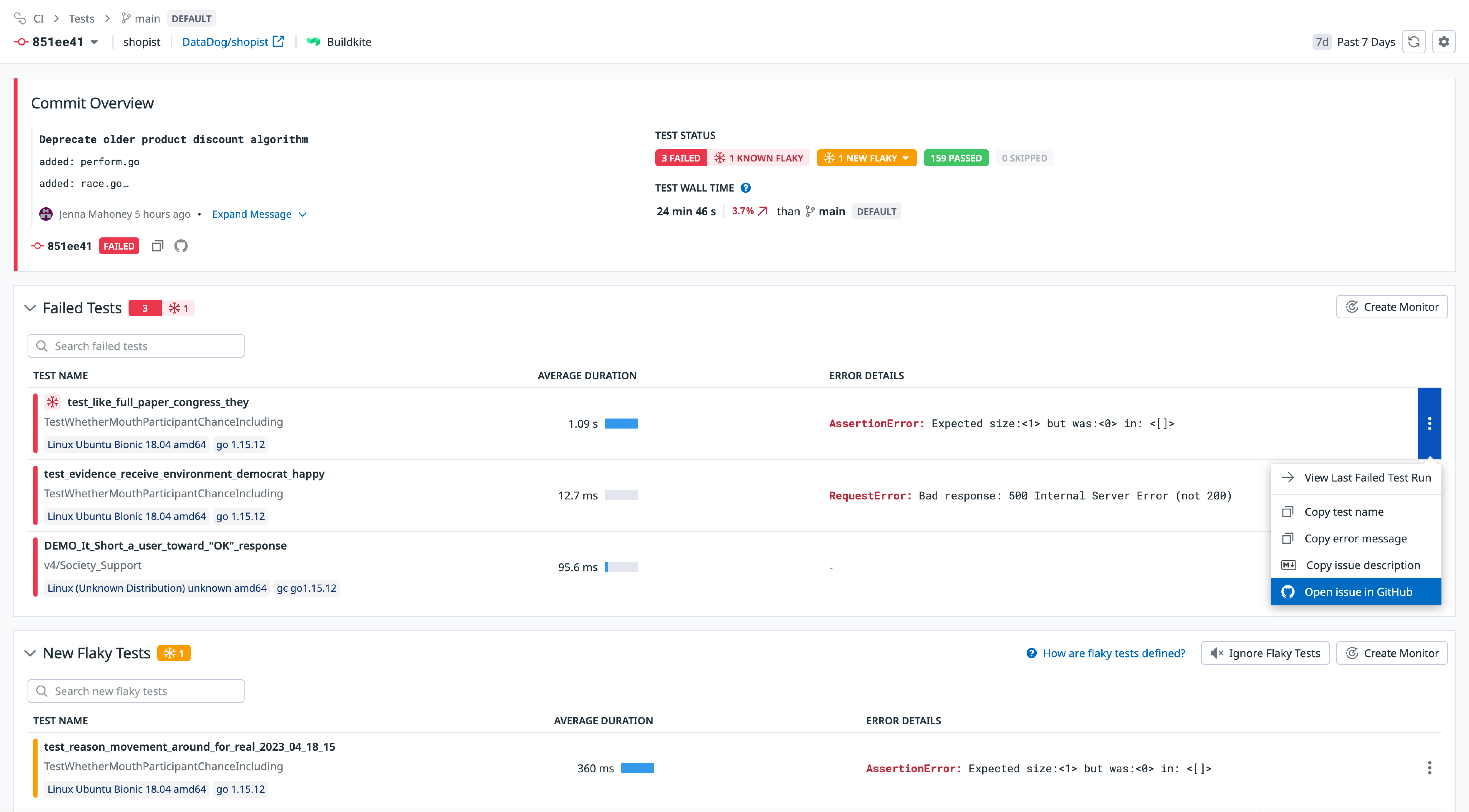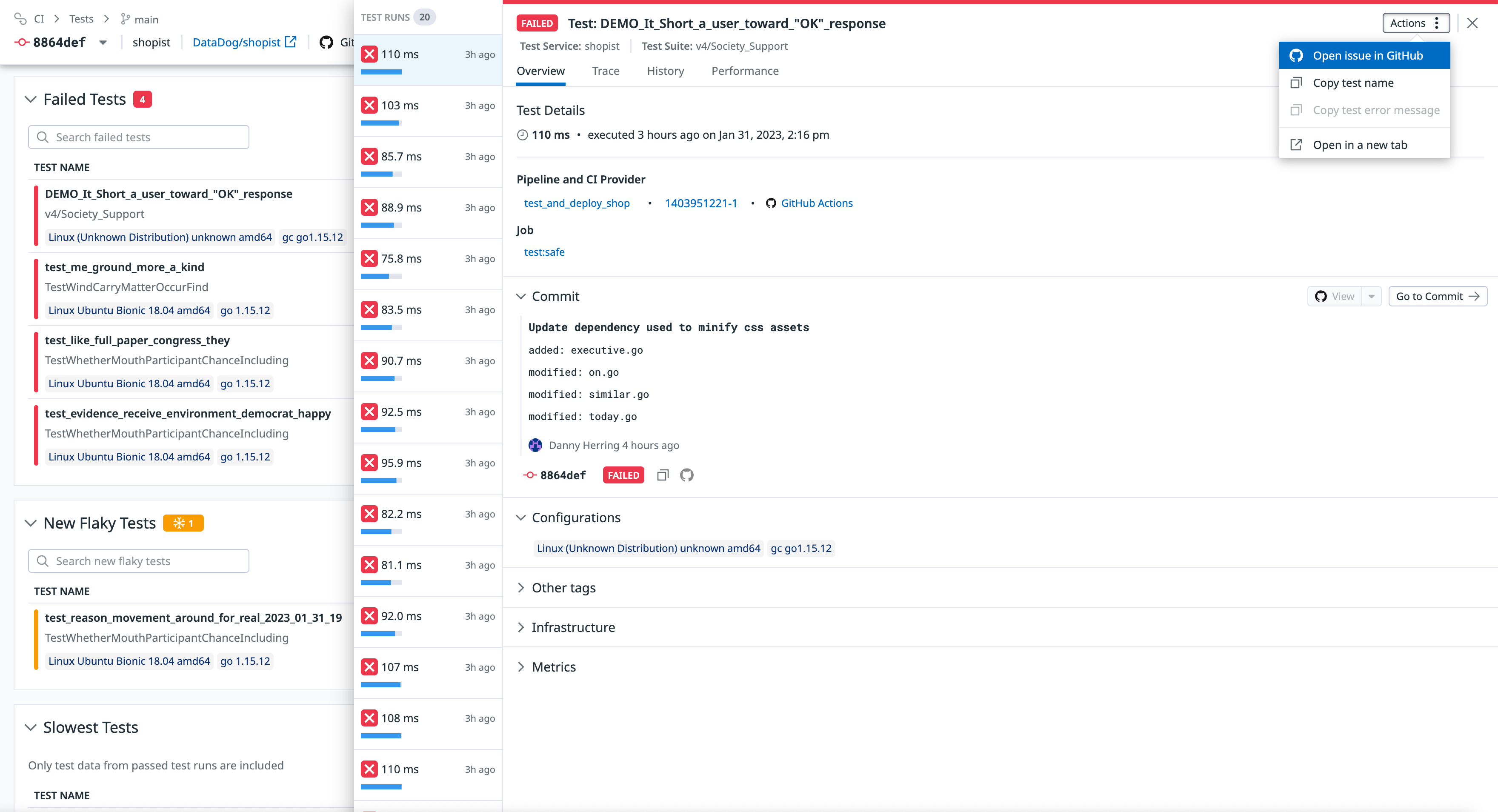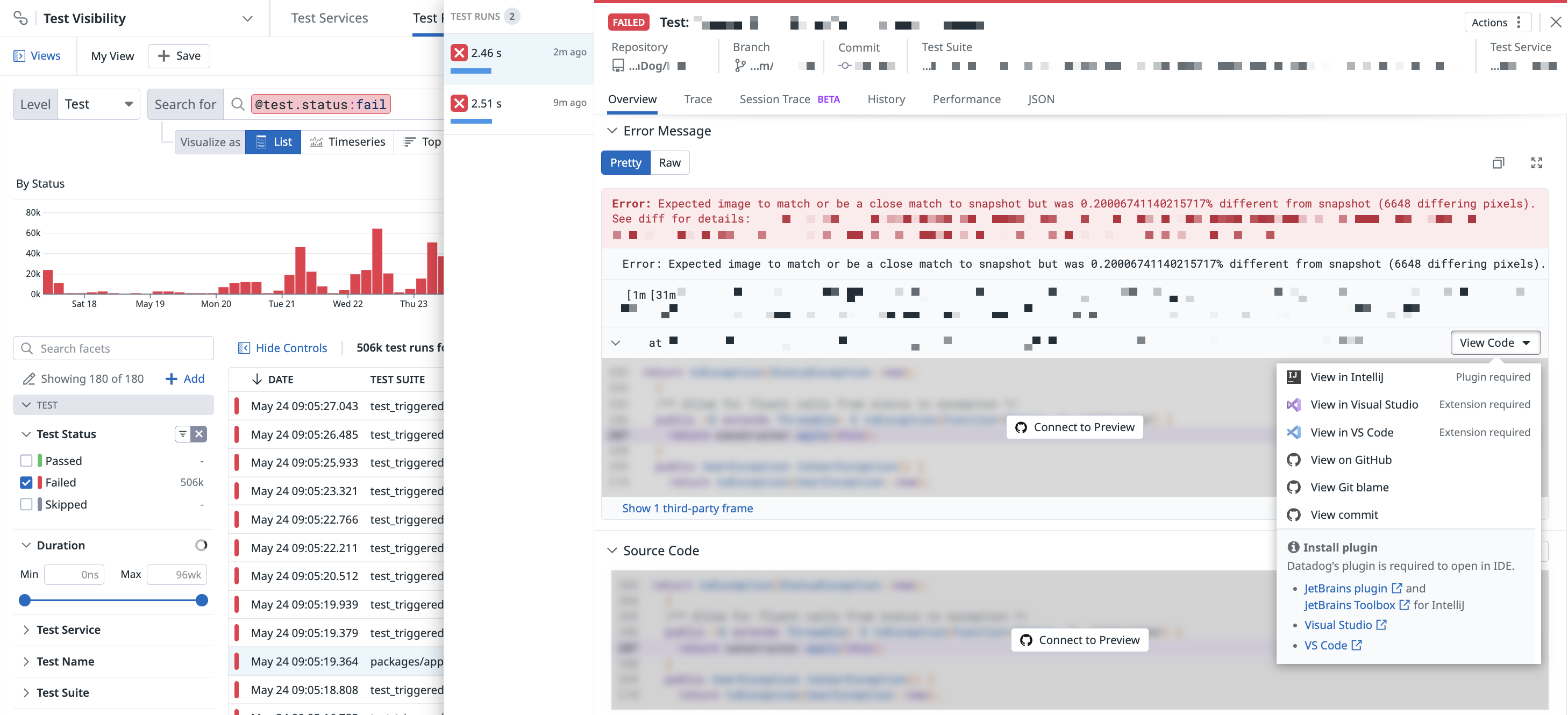- Esenciales
- Empezando
- Agent
- API
- Rastreo de APM
- Contenedores
- Dashboards
- Monitorización de bases de datos
- Datadog
- Sitio web de Datadog
- DevSecOps
- Gestión de incidencias
- Integraciones
- Internal Developer Portal
- Logs
- Monitores
- OpenTelemetry
- Generador de perfiles
- Session Replay
- Security
- Serverless para Lambda AWS
- Software Delivery
- Monitorización Synthetic
- Etiquetas (tags)
- Workflow Automation
- Centro de aprendizaje
- Compatibilidad
- Glosario
- Atributos estándar
- Guías
- Agent
- Arquitectura
- IoT
- Plataformas compatibles
- Recopilación de logs
- Configuración
- Automatización de flotas
- Solucionar problemas
- Detección de nombres de host en contenedores
- Modo de depuración
- Flare del Agent
- Estado del check del Agent
- Problemas de NTP
- Problemas de permisos
- Problemas de integraciones
- Problemas del sitio
- Problemas de Autodiscovery
- Problemas de contenedores de Windows
- Configuración del tiempo de ejecución del Agent
- Consumo elevado de memoria o CPU
- Guías
- Seguridad de datos
- Integraciones
- Desarrolladores
- Autorización
- DogStatsD
- Checks personalizados
- Integraciones
- Build an Integration with Datadog
- Crear una integración basada en el Agent
- Crear una integración API
- Crear un pipeline de logs
- Referencia de activos de integración
- Crear una oferta de mercado
- Crear un dashboard de integración
- Create a Monitor Template
- Crear una regla de detección Cloud SIEM
- Instalar la herramienta de desarrollo de integraciones del Agente
- Checks de servicio
- Complementos de IDE
- Comunidad
- Guías
- OpenTelemetry
- Administrator's Guide
- API
- Partners
- Aplicación móvil de Datadog
- DDSQL Reference
- CoScreen
- CoTerm
- Remote Configuration
- Cloudcraft
- En la aplicación
- Dashboards
- Notebooks
- Editor DDSQL
- Reference Tables
- Hojas
- Monitores y alertas
- Watchdog
- Métricas
- Bits AI
- Internal Developer Portal
- Error Tracking
- Explorador
- Estados de problemas
- Detección de regresión
- Suspected Causes
- Error Grouping
- Bits AI Dev Agent
- Monitores
- Issue Correlation
- Identificar confirmaciones sospechosas
- Auto Assign
- Issue Team Ownership
- Rastrear errores del navegador y móviles
- Rastrear errores de backend
- Manage Data Collection
- Solucionar problemas
- Guides
- Change Tracking
- Gestión de servicios
- Objetivos de nivel de servicio (SLOs)
- Gestión de incidentes
- De guardia
- Status Pages
- Gestión de eventos
- Gestión de casos
- Actions & Remediations
- Infraestructura
- Cloudcraft
- Catálogo de recursos
- Universal Service Monitoring
- Hosts
- Contenedores
- Processes
- Serverless
- Monitorización de red
- Cloud Cost
- Rendimiento de las aplicaciones
- APM
- Términos y conceptos de APM
- Instrumentación de aplicación
- Recopilación de métricas de APM
- Configuración de pipelines de trazas
- Correlacionar trazas (traces) y otros datos de telemetría
- Trace Explorer
- Recommendations
- Code Origin for Spans
- Observabilidad del servicio
- Endpoint Observability
- Instrumentación dinámica
- Live Debugger
- Error Tracking
- Seguridad de los datos
- Guías
- Solucionar problemas
- Límites de tasa del Agent
- Métricas de APM del Agent
- Uso de recursos del Agent
- Logs correlacionados
- Stacks tecnológicos de llamada en profundidad PHP 5
- Herramienta de diagnóstico de .NET
- Cuantificación de APM
- Go Compile-Time Instrumentation
- Logs de inicio del rastreador
- Logs de depuración del rastreador
- Errores de conexión
- Continuous Profiler
- Database Monitoring
- Gastos generales de integración del Agent
- Arquitecturas de configuración
- Configuración de Postgres
- Configuración de MySQL
- Configuración de SQL Server
- Configuración de Oracle
- Configuración de MongoDB
- Setting Up Amazon DocumentDB
- Conexión de DBM y trazas
- Datos recopilados
- Explorar hosts de bases de datos
- Explorar métricas de consultas
- Explorar ejemplos de consulta
- Exploring Database Schemas
- Exploring Recommendations
- Solucionar problemas
- Guías
- Data Streams Monitoring
- Data Jobs Monitoring
- Data Observability
- Experiencia digital
- Real User Monitoring
- Pruebas y monitorización de Synthetics
- Continuous Testing
- Análisis de productos
- Entrega de software
- CI Visibility
- CD Visibility
- Deployment Gates
- Test Visibility
- Configuración
- Network Settings
- Tests en contenedores
- Repositories
- Explorador
- Monitores
- Test Health
- Flaky Test Management
- Working with Flaky Tests
- Test Impact Analysis
- Flujos de trabajo de desarrolladores
- Cobertura de código
- Instrumentar tests de navegador con RUM
- Instrumentar tests de Swift con RUM
- Correlacionar logs y tests
- Guías
- Solucionar problemas
- Code Coverage
- Quality Gates
- Métricas de DORA
- Feature Flags
- Seguridad
- Información general de seguridad
- Cloud SIEM
- Code Security
- Cloud Security Management
- Application Security Management
- Workload Protection
- Sensitive Data Scanner
- Observabilidad de la IA
- Log Management
- Observability Pipelines
- Gestión de logs
- CloudPrem
- Administración
- Gestión de cuentas
- Seguridad de los datos
- Ayuda
Mejorar los flujos de trabajo de los desarrolladores con Datadog
Este producto no es compatible con el sitio Datadog seleccionado. ().
Información general
Test Optimization se integra con otros productos de Datadog orientados a desarrolladores, así como con socios externos como GitHub, para agilizar los flujos de trabajo de los desarrolladores con funciones que incluyen la posibilidad de:
- Activar resúmenes de tests en los comentarios de las solicitudes de extracción de GitHub
- Crear y abrir incidentes en GitHub](#create-and-open-github-issues)
- Crear incidentes en Jira a través de Case Management](#create-jira-issues)
- Abrir tests en GitHub y en tu IDE](#open-tests-in-github-and-your-ide)
Estas funciones están disponibles para todos los clientes de Test Optimization y no requieren el uso de la integración Datadog GitHub.
Resúmenes de tests en solicitudes de extracción de GitHub
Datadog se integra con GitHub para mostrar resúmenes de los resultados de tests directamente en los comentarios de tus solicitudes de extracción. Cada resumen contiene información general de la ejecución de los tests, información sobre fallos, mensajes de error de tests fallidos, regresiones de rendimiento y cambios en la cobertura del código.
Con esta información, los desarrolladores obtienen información instantánea sobre los resultados de sus tests y pueden depurar cualquier tests fallido o defectuosa sin salir de la vista de la solicitud de extracción.
Este integración sólo está disponible para servicios de tests alojados en `github.com`.
Activar los resúmenes de los tests
Puedes activar los resúmenes de los tests en las solicitudes de extracción a través de los siguientes pasos:
- Instala la integración GitHub:
- Ve a la pestaña Configuración en el cuadro de la integración GitHub y haz clic en + Create GitHub App (+ Crear aplicación GitHub).
- Concede a la aplicación permisos de lectura y escritura para solicitudes de extracción.
- Ve a la página Configuración de Test Optimization.
- Selecciona el repositorio en el que quieres activar los resúmenes de los tests.
- Activa el conmutador Comentarios GitHub.
Los comentarios sólo aparecen en las solicitudes de extracción que se abrieron antes de la ejecución del test y que ejecutaron al menos un test de un repositorio habilitado.
Crear y abrir incidentes en GitHub
Con Test Optimization, puedes crear y abrir incidentes de GitHub previamente rellenados con el contexto relevante de tus tests, así como enlaces profundos a Datadog para agilizar los flujos de trabajo de depuración. La creación de incidentes directamente desde Test Optimization puede ayudarte a realizar un seguimiento y mantener la responsabilidad de los fallos de tests y los tests defectuosos.
Puntos de entrada en la aplicación
Puedes crear incidentes de GitHub previamente rellenados desde tres áreas dentro de Test Optimization:
- Página de información general del commit (de la tabla Commits)
- Página de información general de la rama
- Panel lateral de detalles del test
Información general del commit
La página de información general de cualquier commit se puede encontrar en una rama concreta o en un test concreto.
En la página de información general del commit, haz clic en cualquier fila de las tablas Failed Tests o New Flaky Tests y selecciona Abrir incidente en GitHub.
Información general de la rama
En esta página, haz clic en cualquier fila de la tabla Tests defectuosos y selecciona Abrir incidente en GitHub.
Vista de los detalles de los tests
Desde una ejecución de test específica, haz clic en el botón Actions (Acciones) y selecciona Abrir incidente en GitHub.
También tienes la opción de copiar la descripción de un incidente en Markdown para pegar los detalles del test en otro lugar. La descripción en Markdown contiene información como enlace de ejecución del test, servicio, rama, commit, autor y error.
Ejemplo de incidente en GitHub
A continuación se muestra el aspecto que podría tener un incidente de GitHub previamente rellenado:
Crear incidentes en Jira
Con Case Management, puedes crear y abrir incidentes en GitHub previamente rellenados con el contexto relevante de tus tests, así como enlaces profundos a Datadog para agilizar los flujos de trabajo de depuración. La creación de incidentes directamente desde Test Optimization puede ayudarte a realizar un seguimiento y mantener la responsabilidad de los fallos de tests y los tests defectuosos.
Cuando actualizas el estado de un incidente en Jira, el estado en Case Management se actualiza y refleja el estado del último caso.
Puntos de entrada en la aplicación
Después de haber configurado la integración Jira, puedes crear casos desde tres áreas dentro de Test Optimization:
- Página de información general del commit (de la tabla Commits)
- Sección Tests defectuosos
- Panel lateral de ejecuciones de tests
Puedes crear manualmente un incidente en Jira a partir de un caso en Case Management haciendo clic en Shift + J.
Información general del commit
La página de información general de cualquier commit se puede encontrar en una rama concreta o en un test concreto.
En la página de información general del commit, haz clic en cualquier fila de las tablas Failed Tests o New Flaky Tests y selecciona Crear caso.
Información general de la rama
En esta página, haz clic en cualquier fila de la tabla Tests defectuosos y selecciona Crear caso.
Vista de ejecuciones de tests
En una ejecución de test específica, haz clic en el botón Actions (Acciones) y selecciona Crear caso.
Para obtener más información sobre la configuración de la integración Jira, consulta la documentación de Case Management.
Abrir tests en GitHub y en tu IDE
Puntos de entrada en la aplicación
Después de detectar un test fallido o defectuoso en Datadog, tienes la opción de abrir ese test en GitHub o en tu IDE para corregirlo inmediatamente.
En la sección Mensaje de error de la pestaña Información general de una ejecución de test haz clic en el botón View Code (Ver código) para ver las líneas de código relevantes de ese test en Visual Studio Code, IntelliJ o GitHub.
El orden de las opciones de este desplegable cambia en función del lenguaje en el que se haya escrito tu test:
- IntelliJ tiene prioridad para los tests basados en Java
- Visual Studio Code tiene prioridad para los tests basados en JavaScript y Python
Visualización del código fuente en GitHub
También puedes configurar la integración GitHub para abrir el código fuente de un test fallido o defectuoso en GitHub.
En la sección Código fuente de la pestaña Información general de una ejecución de test haz clic en el botón View on GitHub (Ver en GitHub) para ver las líneas de código relevantes de ese test en GitHub.
Instalación de complementos IDE
Los complementos y las extensiones IDE son necesarios para ver tu test en tu IDE.
- Si no tienes instalada la extensión VS Code, haz clic en View in VS Code (Ver en VS Code) para abrir la extensión directamente en VS Code para su instalación.
- Si no tienes instalado el complemento de IntelliJ, haz clic en View in IntelliJ (Ver en IntelliJ) para obtener la instalación de la extensión. Puedes encontrar las versiones de Datadog compatibles en la página Versiones de complementos.
Referencias adicionales
Más enlaces, artículos y documentación útiles:












